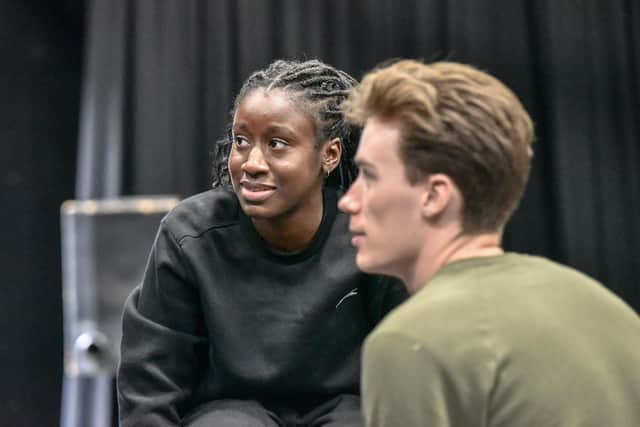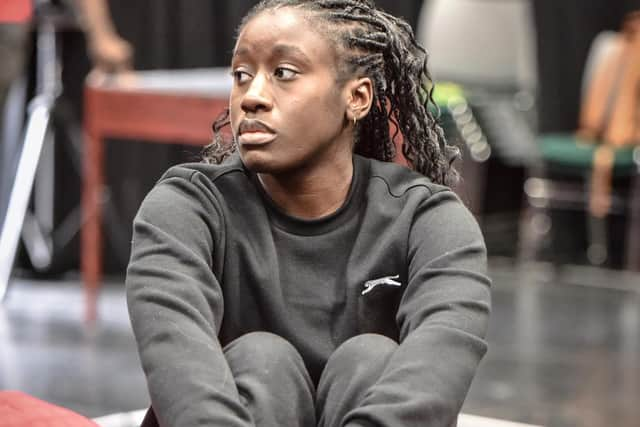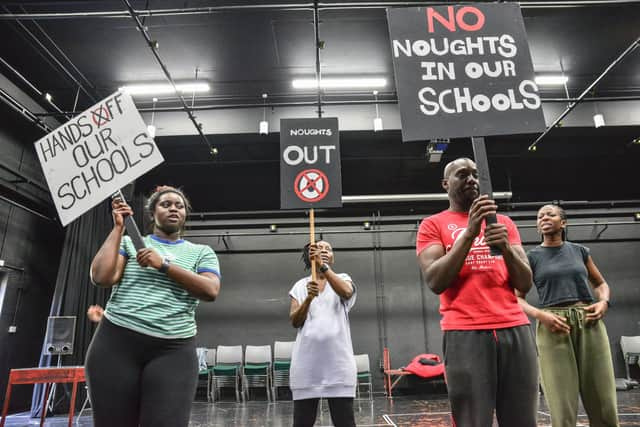Pilot Theatre's Noughts and Crosses returns to the stage at York Theatre Royal
In 1968 Elliot was a teacher at a primary school in Iowa when she first staged the experiment which has made her famous.
Practicing the experiment with her eight and nine-year-old charges, she separated the class into two different factions based on the colour of their eyes, and treated one group deliberately worse than the other.
Advertisement
Hide AdAdvertisement
Hide AdThe exercise has since been run by Elliot in organisations all over the world, in a bid to highlight and tackle the pernicious evil of racism.


Malorie Blackman attempted to do something similar on a wider scale with her powerful and important series of books Noughts and Crosses. Published over two decades ago, when the first book arrived in 2001 it provided the young adult genre of novels with a world turned upside down.
White skinned people, Noughts and the dark skinned Crosses are segregated, with the dark skinned people ruling a society separated on racial lines.
“It was a book I was compelled to write,” says Blackman.
“It was my 50th book and I wanted to address racism and its legacy directly. I wanted to write something about what it’s like to be judged based on the colour of your skin.


Advertisement
Hide AdAdvertisement
Hide Ad"That was the genesis of the series and what I thought might be one book and then three books eventually turned into six books and three novellas. My husband says it’s the longest trilogy on the planet.”
It is of course now also a BBC television series and in 2019 was adapted for the stage for Pilot Theatre by poet and playwright Sabrina Mahfouz.
“I feel very fortunate because I’ve been included in all of the different iterations. Each one has been different, as it should be, because an adaptation can’t just be the book and nor should it try to be,” says Blackman.
"I think all the different adaptations have kept the essence of the story and that’s primarily what I was keen to see happen. I’m not precious about my stuff and I expect it to change, that’s the nature of adaptation. But as long as they’ve kept to the essence of it, that’s fine with me.”


Advertisement
Hide AdAdvertisement
Hide AdTold from the perspectives of two teenagers, Noughts and Crosses is a love story set in a volatile,
racially segregated society and explores the themes of love, revolution and what it means to grow up
in a divided world.
The woman responsible for bringing Mahfouz’s adaptation to the stage is Pilot artistic director Esther Richardson. Pilot, the York-based company that specialises in making work for young people, took this adaptation to 30,000 people (with 40 per cent of the audience being aged under 20) on the previous tour in 2019, winning the award for Excellence in Touring at that year’s UK Theatre Awards.
Richardson says: “Long before I was running Pilot I had a real passion for young adult literature. I bought Noughts and Crosses and I remember I read the three books in about a week. I was so gripped by the story that I wanted to read the second and third one immediately.
Advertisement
Hide AdAdvertisement
Hide Ad“When I got the job with Pilot in 2016, it was obvious to me that this was a show that the company should do, because Pilot has this wonderful legacy of doing work on race equity and had done a lot of work with black artists. It just seemed to me like a natural fit for Pilot.”
The story, while an exploration of race and racism, is at its heart a love story between Cross Sephy and Nought Callum, brought together in a romance that puts them both in danger.
Richardson says: “It is fundamentally a love story, that’s so clear. Their relationship is the spine of the show.”
Blackman adds: “It does speak to the times we’re in. It’s important to remember it’s also a story about class. It speaks to where we are now in that there are those who have and those who have not and the gap between them is getting wider and wider.
Advertisement
Hide AdAdvertisement
Hide Ad“Obviously it was inspired by Romeo and Juliet and it has that vibe to it. It was important for me to say that sometimes love isn’t enough but, at the same time, we always have hope. Hope for the next generation.”
Noughts and Crosses, York Theatre Royal, September 16-24, then touring.